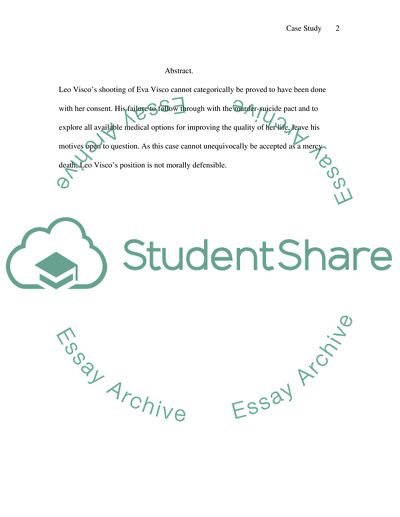Cite this document
(“Euthanasia: Leo Viscos Case Study Example | Topics and Well Written Essays - 1000 words”, n.d.)
Euthanasia: Leo Viscos Case Study Example | Topics and Well Written Essays - 1000 words. Retrieved from https://studentshare.org/ethics/1706337-ethics-case-study-on-the-taking-of-human-life
Euthanasia: Leo Viscos Case Study Example | Topics and Well Written Essays - 1000 words. Retrieved from https://studentshare.org/ethics/1706337-ethics-case-study-on-the-taking-of-human-life
(Euthanasia: Leo Viscos Case Study Example | Topics and Well Written Essays - 1000 Words)
Euthanasia: Leo Viscos Case Study Example | Topics and Well Written Essays - 1000 Words. https://studentshare.org/ethics/1706337-ethics-case-study-on-the-taking-of-human-life.
Euthanasia: Leo Viscos Case Study Example | Topics and Well Written Essays - 1000 Words. https://studentshare.org/ethics/1706337-ethics-case-study-on-the-taking-of-human-life.
“Euthanasia: Leo Viscos Case Study Example | Topics and Well Written Essays - 1000 Words”, n.d. https://studentshare.org/ethics/1706337-ethics-case-study-on-the-taking-of-human-life.


